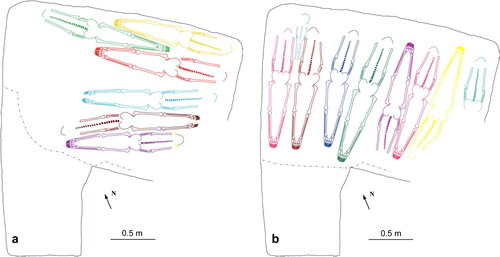Figures & data
Fig 1 COVID-19 mass graves at Hart Island (NYC) on 9 April 2020. Image taken from Slotnik (Citation2021). © AP Images/John Minchillo. Used under license.
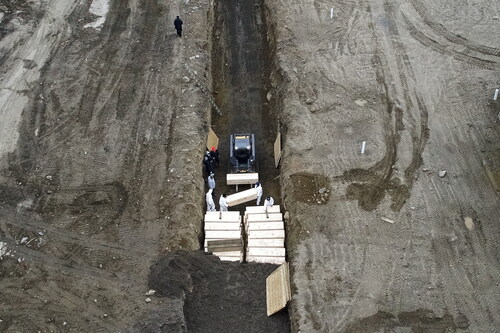
Fig 2 Position of the bodies in the early medieval multiple burial (Grave 41) at Hérange, France. Of the four individuals buried in this feature, A, B and D are maternally related, while C—a juvenile with opposite orientation—is not. After Deguilloux et al Citation2018, . © Elsevier and authors. Reproduced with kind permission of the authors and Elsevier.
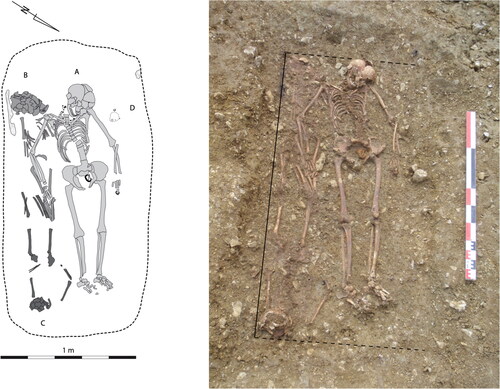
Fig 3 Individuals 167 (L) and 166 (R) buried with various types of brooches and beads typical of the period in one of the multiple burials connected to the Justinianic Plague from Aschheim-Bajuwarenring, Germany. After Gutsmiedl-Schümann et al Citation2018, . © De Gruyter and authors. Reproduced with kind permission of the authors.
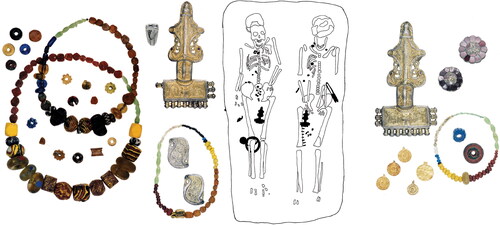
Fig 4 The reuse of an earlier henge ditch for the convenient disposal of many bodies in the 10th-century mass grave at St John’s College, Oxford. Each individual skeleton in the mass grave is drawn in red. Image taken from Wallis Citation2014, . © Thames Valley Archaeological Services. Reproduced with kind permission of the authors.
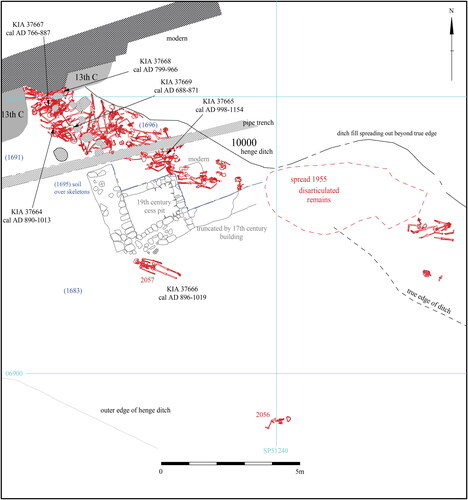
Fig 5 The c 50 men decapitated and piled in a 10th- or 11th-century mass grave with their skulls at Ridgeway Hill. Each skeleton is coloured differently for visual distinction. Loe et al Citation2014, © Oxford Archaeology and Dorset County Council. Reproduced with kind permission of Oxford Archaeology.
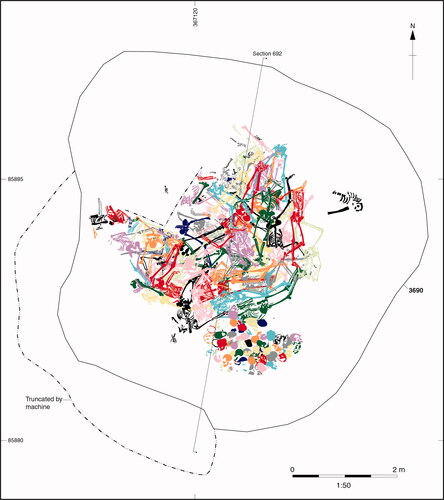
Fig 6 Kiln XXVIIb/1 from the late Roman-period fort at Keszthely-Fenékpuszta, reused as a 5th-century mass grave and containing remains from at least 27 individuals. Drawing and photo after Straub Citation2002, abb 8.
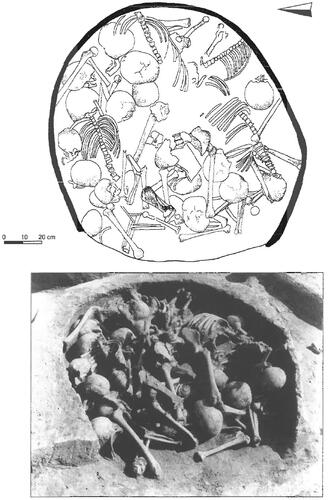
Table 1 Comparison of suggested new definitions for mass graves and multiple burials.
Fig 7 The 8th-century multiple burials at Salme I and Salme II in Estonia. (a) A possible reconstruction of the position of the bodies in Salme I. Their placements at the oars and helm are understood as reflection of their roles in the ship; (b–c) Position of the bodies in Salme II. In the northeastern part of the ship the remains of at least 34 individuals were arranged into four regular layers (coloured differently on the 3D model) that were separated by thin layers of soil and sand and were partly covered with shields. Illustrations taken from: (a) Allmäe Citation2012, ; Reproduced with kind permission of the authors; (b–c) After Peets et al Citation2012, figs 10 and 12.
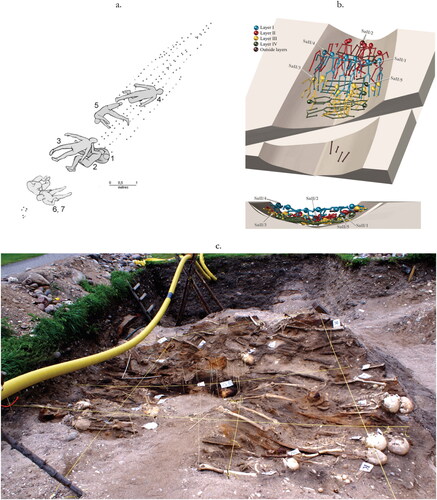
Fig 8 Grave 81 at Lechlade which contains the remains of five individuals (scale 1:20). Individual 81.1 was buried below the rest, and the grave was covered with limestone. After Boyle et al Citation1998, fig 5.15. © Oxford Archaeology. Reproduced with kind permission of Oxford Archaeology

Fig 9 Two successive layers of Tomb 18 from the catacombs of SS Peter and Marcellinus: the east-west orientations (a) are superseded by north-south orientations (b). Mission SSPM 2005-2006. Illustrations: After Blanchard and Castex 2007, . © Antiquity and authors. Reproduced with kind permission of the authors.
